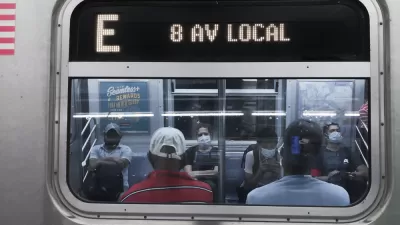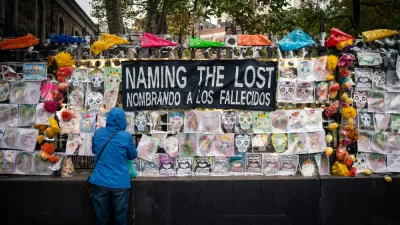A new report on the finances of the New York Metropolitan Transportation Authority (MTA) makes a desperate plea for assistance from the federal government.

Joseph Spector shares news of a report by New York State Comptroller Thomas DiNapoli that describes the funding shortfalls at the New York Metropolitan Transportation Authority (MTA) as the "greatest crisis" in the history of the transit agency.
"The MTA’s financial condition is dire,” DiNapoli said in a statement quoted in the article. "With ridership down, debt burden rising and no additional help likely from New York state or New York City, the MTA desperately needs an influx of federal funds or unheard of service cuts and workforce reductions will happen."
According to the report, the NTA faces a $6.3 billion projected gap next year is more than half of the MTA’s annual projected revenue—a hole that could not be closed without an infusion in aid. That projected budget gap is expected to grow to $12 billion over four years, reports Spector.
The MTA has been seeking $12 billion in funding to whether the fiscal storm brought by the coronavirus pandemic—an ask complicated by the stalled progress of federal stimulus talks in Congress in recent days and weeks.
Over the course of the pandemic, transit planning in the city of New York has been a tale of two modes: bus ridership has rebounded faster from pandemic lows than subway ridership. The MTA cut overnight service on the subway (for debatable purposes) before the city ramped up planning for new bus lanes around the city.
FULL STORY: MTA faces 'greatest crisis' in its history. What a new report shows.

Study: Maui’s Plan to Convert Vacation Rentals to Long-Term Housing Could Cause Nearly $1 Billion Economic Loss
The plan would reduce visitor accommodation by 25,% resulting in 1,900 jobs lost.

North Texas Transit Leaders Tout Benefits of TOD for Growing Region
At a summit focused on transit-oriented development, policymakers discussed how North Texas’ expanded light rail system can serve as a tool for economic growth.

Why Should We Subsidize Public Transportation?
Many public transit agencies face financial stress due to rising costs, declining fare revenue, and declining subsidies. Transit advocates must provide a strong business case for increasing public transit funding.

How Community Science Connects People, Parks, and Biodiversity
Community science engages people of all backgrounds in documenting local biodiversity, strengthening connections to nature, and contributing to global efforts like the City Nature Challenge to build a more inclusive and resilient future.

Alabama: Trump Terminates Settlements for Black Communities Harmed By Raw Sewage
Trump deemed the landmark civil rights agreement “illegal DEI and environmental justice policy.”

Dear Tesla Driver: “It’s not You, It’s Him.”
Amidst a booming bumper sticker industry, one writer offers solace to those asking, “Does this car make me look fascist?”
Urban Design for Planners 1: Software Tools
This six-course series explores essential urban design concepts using open source software and equips planners with the tools they need to participate fully in the urban design process.
Planning for Universal Design
Learn the tools for implementing Universal Design in planning regulations.
City of Santa Clarita
Ascent Environmental
Institute for Housing and Urban Development Studies (IHS)
City of Grandview
Harvard GSD Executive Education
Toledo-Lucas County Plan Commissions
Salt Lake City
NYU Wagner Graduate School of Public Service





























